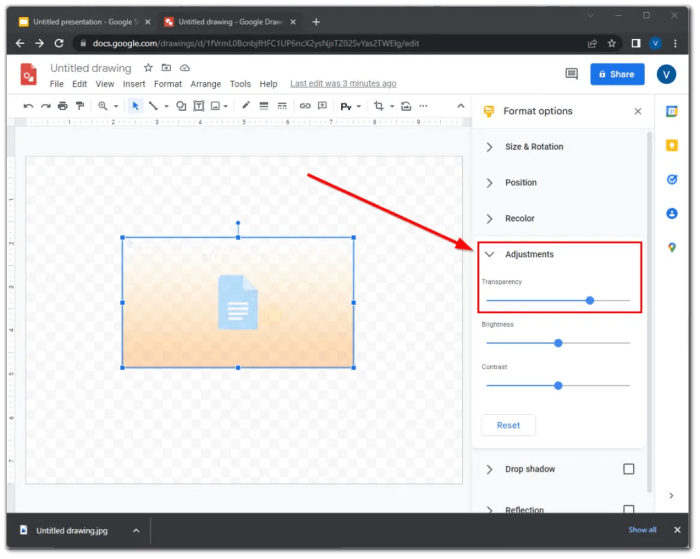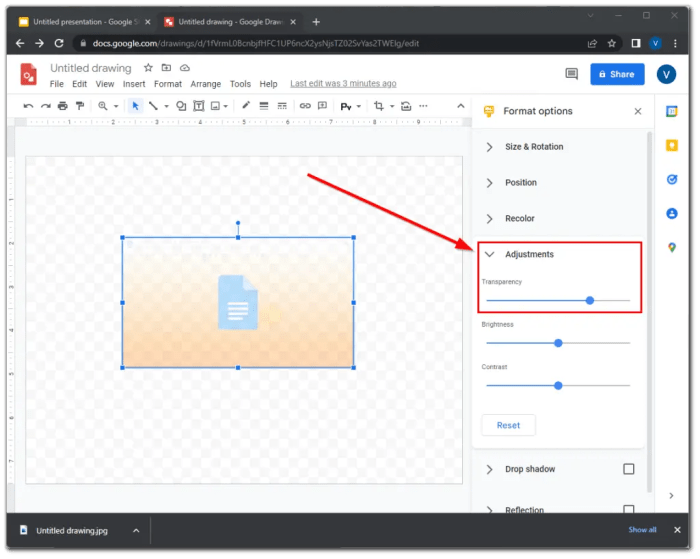Google approaching election ads with more transparency is a significant development, promising a more open and accountable political advertising landscape. This shift reflects a growing awareness of the potential for misinformation and manipulation in online political discourse. We’ll explore Google’s past practices, the specific changes they’re implementing, and the potential impact on political campaigns, public perception, and the future of elections.
How will this transparency affect the way campaigns operate and the information consumers see?
Google’s new policies are expected to bring greater clarity to the sources and funding behind election-related ads. This will involve enhanced disclosure requirements, potentially impacting the strategies employed by political campaigns. Furthermore, the impact on public trust in both Google and the electoral process will be scrutinized. We’ll analyze the technical challenges involved in implementing this new transparency, and consider the long-term implications for political discourse and the integrity of future elections.
Google’s Transparency Initiatives
Google has a significant role in shaping the political landscape through its online advertising platforms. Historically, the company has faced criticism regarding transparency in election-related advertising. This scrutiny has led to a series of changes in Google’s policies, aimed at increasing transparency and accountability. These changes seek to improve the information available to voters, allowing them to more easily discern the sources and motivations behind political ads.Google’s updated approach acknowledges the importance of informed public discourse during election cycles.
The company recognizes the potential for misinformation and manipulation through online advertising and seeks to mitigate its influence. This commitment to greater transparency is a critical step in fostering a healthier and more accountable digital ecosystem.
Google’s Past Practices Regarding Election Advertising
Google’s previous practices regarding election advertising lacked a robust system for identifying and verifying the sources of political advertisements. This ambiguity allowed for the proliferation of misleading or inaccurate information without adequate verification or disclosure mechanisms. Users often lacked sufficient context to assess the credibility of the ads they encountered, raising concerns about potential manipulation and the spread of misinformation.
Specific Changes in Google’s Policies
Google is implementing several changes to its policies. These include a greater emphasis on disclosing the source of election-related advertisements, including details about the campaigns, organizations, or individuals paying for them. The company is also enhancing its labeling and categorization of political ads, clearly differentiating them from other forms of advertising. This allows users to easily identify the nature of the content they are viewing.
Furthermore, Google is working to provide more comprehensive information about the targeting parameters used for political advertisements. This information will help voters understand how the ads are reaching specific audiences.
Impact on Ad Visibility and Targeting
The new policies will impact ad visibility and targeting by requiring clearer labeling of political advertisements. This means that users will be able to distinguish political ads from other types of ads more readily. The enhanced disclosure requirements will also influence targeting strategies. Advertisers may need to be more transparent about the criteria used to target specific demographics or interests.
This could potentially lead to a reduction in targeted advertising based on sensitive or controversial criteria.
Benefits and Drawbacks of the Transparency Measures
Increased transparency in election advertising offers several benefits, including greater voter awareness and accountability. By understanding the sources and motivations behind political advertisements, voters can make more informed decisions. However, there are potential drawbacks to consider. For example, some advertisers may choose to limit their spending on political advertising due to the added disclosure requirements. This could potentially restrict the range of voices or perspectives presented during elections.
Comparison with Other Major Digital Platforms
The following table compares Google’s transparency initiatives with those of other major digital platforms:
| Platform | Policy | Implementation | Impact |
|---|---|---|---|
| Enhanced disclosure of ad sources, improved labeling, and more detailed targeting information. | Implementing new labeling systems, enhanced disclosure requirements, and providing more transparency on targeting criteria. | Increased visibility of political ad sources, potential impact on ad targeting strategies, and potential reduction in misleading or targeted advertising. | |
| Requires disclosure of political ad spenders and allows for ad transparency settings. | Implementation of a system for disclosing ad spenders and providing transparency settings to users. | Improved transparency on the sources of political ads and user control over ad exposure. | |
| Requires disclosure of political ad spenders. | Implementation of a system for disclosing ad spenders and enforcing the disclosure requirement. | Increased transparency on the sources of political ads, potential impact on ad visibility, and potential reduction in misinformation. |
Impact on Political Campaigns
Google’s increased transparency in election advertising is poised to significantly reshape the political landscape. This shift demands a proactive approach from campaigns, forcing them to adapt their strategies and potentially re-evaluate their spending models. The focus on verifiable information and campaign disclosure will likely influence voter perception and campaign effectiveness.Political campaigns will need to carefully consider how to navigate this new environment.
Google’s move towards more transparent election ad practices is a positive step, but it’s not just about the ads themselves. To really maximize your reach and impact, consider managing your organic social media presence effectively. This will help you understand your audience better and will make your paid campaigns more effective, which is crucial when dealing with political advertising.
Learning how to manage your organic social media to boost your paid performance can make all the difference. manage your organic social media to boost your paid performance Ultimately, more transparency in election ads is key to a healthy and informed electorate, and understanding your audience through organic social media can play a significant role in this effort.
Transparency in funding sources, messaging, and potential conflicts of interest will be paramount. Campaigns must be prepared to provide verifiable information and documentation, fostering trust and credibility with the electorate.
Potential Strategies for Campaigns
This new level of transparency necessitates a change in campaign strategies. Campaigns must embrace a proactive approach to disclosure, potentially including detailed breakdowns of their spending patterns across different platforms and advertising channels.
- Transparency in Funding: Campaigns can enhance transparency by clearly outlining the sources of their funding, including individual donors and political action committees (PACs). This allows for a more comprehensive understanding of the financial backing behind the campaign. Increased transparency in this area builds trust and addresses potential concerns about undue influence.
- Fact-Checking Partnerships: Campaigns can actively engage with independent fact-checking organizations. By preemptively addressing potential controversies and inaccuracies, campaigns can build credibility and proactively address concerns from the public.
- Enhanced Data Analysis: Campaigns can utilize data analytics to identify effective messaging and tailor their advertising strategies to specific demographics. This allows for more targeted and impactful campaigns while increasing efficiency in campaign spending.
Effectiveness of Campaign Strategies
The effectiveness of these strategies will depend on their implementation and public reception. Transparency, in particular, is critical for building trust and credibility. Campaigns must ensure that their efforts align with Google’s transparency policies.
| Strategy | Description | Effectiveness |
|---|---|---|
| Transparency in Funding | Clear disclosure of funding sources, including donors and PACs. | High potential for building trust and credibility, but may also expose vulnerabilities to scrutiny. |
| Fact-Checking Partnerships | Proactive engagement with independent fact-checking organizations to address potential inaccuracies. | High potential for building credibility, but may face challenges in achieving widespread acceptance and neutrality. |
| Enhanced Data Analysis | Utilizing data analytics to optimize messaging and target specific demographics. | High potential for increasing campaign efficiency and effectiveness, but may raise concerns about voter targeting and manipulation. |
Independent Fact-Checking Organizations
Independent fact-checking organizations can play a crucial role in this new environment. With increased transparency, they will have greater access to campaign data, allowing for more comprehensive fact-checking and analysis. This increased access empowers fact-checkers to verify claims, scrutinize advertising, and hold campaigns accountable.
Areas of Concern for Political Campaigns
Campaigns may face challenges in adapting to increased transparency. Potential concerns include the increased scrutiny of their spending, messaging, and potential conflicts of interest. Transparency may also expose vulnerabilities to criticism and challenges from opposing groups.
Google’s move towards more transparent election ad practices is a good step, but how do we navigate the complex world of social media campaigns? Understanding how to set clear goals and track their success is key, especially when it comes to political advertising. Check out this helpful guide for setting up social media goals and how to hit them a guide to setting up social media goals and how to hit them.
Ultimately, transparency in election ads is crucial, and having the tools to understand social media strategies will only strengthen our ability to critically evaluate these campaigns.
Impact on Political Advertising Spending
The impact on political advertising spending is uncertain, but it is likely to be significant. Campaigns may shift spending to prioritize platforms that align with Google’s transparency policies. Furthermore, campaigns may need to adjust their strategies to ensure their messaging aligns with verifiable information, potentially impacting the overall cost of advertising. A focus on verifiable claims and evidence-based arguments may increase the overall cost of campaign materials and potentially shift spending to more substantive, fact-based advertising.
Public Perception and Trust
Google’s increased transparency in election advertising is a significant step, but its impact on public perception and trust is complex and multifaceted. The move, while aiming to enhance accountability and voter understanding, may also trigger varying reactions and potentially alter public confidence in both Google and the election process itself. Understanding these potential reactions is crucial for Google to navigate this evolving landscape and manage public perception effectively.
Potential Public Reactions to Google’s Transparency
Public reaction to Google’s transparency initiatives regarding election ads will likely be diverse. Some segments of the population may applaud the increased visibility and accountability, viewing it as a positive step toward a more informed electorate. Conversely, others may view the disclosures as an intrusion into their privacy or a burdensome regulatory burden. The potential for misinformation and the possibility of increased scrutiny on political advertising could also generate anxieties.
Impact on Public Trust in Google, Google approaching election ads with more transparency
Google’s commitment to transparency in election advertising will significantly impact public trust in the company. If the implementation is seamless and perceived as genuinely helpful, it could enhance Google’s reputation as a responsible tech giant. Conversely, if the transparency measures are perceived as insufficient, confusing, or burdensome, it could damage public trust and potentially alienate users. Historical examples of corporate transparency initiatives show that public response varies depending on the perceived effectiveness and impact of those initiatives.
Impact on Public Trust in the Election Process
Google’s transparency in election advertising could influence public trust in the electoral process itself. Increased scrutiny of political advertising could lead to a greater understanding of the complexities of political campaigns and the potential for misinformation. However, the opposite outcome is also possible, with some individuals feeling that the added detail might only further confuse the electorate and erode faith in the democratic process.
Public perception is often shaped by both positive and negative experiences with institutions, so a well-executed transparency initiative is key.
Comparison with Other Social Media Platforms
Public perception of Google’s transparency efforts will inevitably be compared to those of other social media platforms. If Google’s approach is perceived as more rigorous and comprehensive than its competitors, it could enhance its reputation. However, if other platforms are seen as implementing more user-friendly or accessible transparency initiatives, Google may face challenges in maintaining a positive image.
Different user experiences and expectations can shape public perceptions.
Potential Public Reactions Table
| Reaction | Reason | Impact |
|---|---|---|
| Positive | Increased accountability and trust in Google. | Enhanced reputation and potential increase in user engagement. |
| Negative | Perceived intrusion into privacy or burdensome regulations. | Potential damage to Google’s reputation and user base. |
| Mixed | Concerns about misinformation or scrutiny of political advertising. | Uncertainty about long-term impact on public trust in both Google and the election process. |
| Indifferent | Little impact on the user’s perspective. | Potential for minimal change in Google’s public image and trust. |
Strategies for Managing Public Perception
Google should implement a multi-faceted strategy to manage public perception. This includes proactively addressing concerns about privacy, misinformation, and the potential for over-regulation. Clear and consistent communication, coupled with user-friendly tools and resources, is essential to ensure that the public understands the rationale behind the transparency measures. This will help shape a positive perception of the initiative and mitigate potential negative impacts.
Transparency should be presented as a benefit to the user, not a burden.
Technical Implementation and Challenges
Implementing transparency in election advertising requires a robust technical framework. This involves not only collecting and verifying data but also ensuring accessibility and usability for the public. The technical hurdles are substantial, demanding a sophisticated approach to data management, verification, and security. Furthermore, navigating the complex landscape of political campaigns and their advertising strategies requires a meticulous understanding of their operations.The core challenge lies in verifying the accuracy of the information disclosed by political campaigns.
This necessitates robust systems capable of cross-referencing information from diverse sources, including campaign finance records, social media posts, and even public statements. The sheer volume of data involved necessitates sophisticated algorithms and automated processes to maintain efficiency and accuracy.
Technical Aspects of Implementation
A crucial component of implementing transparency policies is developing a centralized platform for storing and managing election ad data. This platform needs to be easily accessible to the public, allowing them to browse and filter information. It must also be designed to handle the expected volume of data, potentially including information from various sources and formats, ensuring scalability and reliability.
Critical features include robust data validation tools to ensure the authenticity and accuracy of the data provided.
Verification of Disclosed Information
Verification of information disclosed by political campaigns presents significant technical hurdles. Manually checking every piece of disclosed information is impractical. Instead, automated systems using machine learning and natural language processing (NLP) can play a critical role in detecting discrepancies and potential inaccuracies. Furthermore, linking ads to their sources, including campaign websites and social media accounts, is essential for context and verification.
Open-source tools and APIs can facilitate this process.
Examples of Existing Systems and Tools
Various systems and tools exist for tracking and verifying election ads, each with its own strengths and limitations. For instance, some platforms focus on tracking spending patterns across different media outlets. Others specialize in analyzing social media posts and identifying campaign-related content. Each approach has its specific use cases and potential blind spots. The ideal system will integrate data from multiple sources to provide a comprehensive picture of campaign advertising.
Comparison of Different Approaches
Different approaches to tracking and verifying election ads have varying degrees of sophistication. Some rely on manual review, which can be time-consuming and prone to errors. Others utilize machine learning algorithms to identify patterns and anomalies in the data, offering a more automated and potentially faster approach. Comparing the efficiency, accuracy, and cost-effectiveness of each method is essential in choosing the most suitable approach for a particular context.
Google’s move towards more transparent election ad practices is a good step. It’s all about accountability, and it’s exciting to see them pushing the boundaries. This increased transparency aligns nicely with the new extensions integrating the upgraded extensions in google, which further enhance user experience and information access. Ultimately, this improved transparency around election ads benefits everyone by fostering a more informed electorate.
new extensions integrating the upgraded extensions in google are a fantastic development in that regard, showing a commitment to improved user tools. It will be interesting to see how these advancements in user tools and transparency affect election outcomes.
Data Privacy and Security Issues
Protecting the privacy and security of the data collected and stored is paramount. This requires robust encryption methods to safeguard sensitive information, and strict access controls to limit data exposure. Data anonymization techniques should be employed to protect individual identities and avoid potential misuse of personal information. Maintaining data integrity and ensuring compliance with relevant regulations is critical.
Table of Potential Technical Challenges and Solutions
| Challenge | Description | Proposed Solution |
|---|---|---|
| Data Volume and Velocity | The sheer amount of election ad data generated daily can overwhelm existing systems. | Implement scalable cloud-based storage and processing solutions. Employ real-time data streaming and processing techniques. |
| Data Variety and Format | Ads appear in diverse formats (e.g., text, video, audio) and sources (e.g., websites, social media). | Develop standardized data formats and create a unified data model. Employ data transformation and enrichment techniques to ensure consistency. |
| Information Accuracy Verification | Ensuring the accuracy of disclosed information from various sources. | Employ machine learning models for pattern recognition and anomaly detection. Integrate cross-referencing mechanisms with other databases. |
| Data Privacy and Security | Protecting sensitive data from unauthorized access and misuse. | Implement robust encryption and access control measures. Comply with relevant data privacy regulations. |
| System Scalability | Maintaining system performance and reliability under high demand during election periods. | Implement load balancing and failover mechanisms. Employ distributed processing architectures. |
Long-Term Implications: Google Approaching Election Ads With More Transparency
Google’s increasing transparency in election advertising is a significant step toward fostering a more informed electorate. This shift, however, carries profound long-term implications for the political landscape, potentially altering how campaigns are run, how voters perceive information, and the very nature of political discourse. The ramifications extend beyond immediate elections, influencing future campaigns and potentially sparking legal and regulatory responses.
Potential Effects on Future Elections
Increased transparency could fundamentally alter the way political campaigns operate. Candidates may be more cautious in their messaging, aware that every ad and piece of information will be scrutinized. This could lead to a greater emphasis on verifiable facts and data-driven strategies, rather than relying on emotionally charged rhetoric or misleading claims. Furthermore, campaigns may invest more in crafting sophisticated strategies to navigate the new transparency requirements, leading to a potential increase in the cost of campaigning.
Influence on Political Discourse
Transparency in political advertising has the potential to reshape political discourse. By making it easier to identify the sources of political messages, voters may become more critical consumers of information, seeking independent verification of claims. This shift could lead to more substantive debates on policy issues, as candidates are incentivized to present clear, verifiable positions rather than relying on obfuscation.
Conversely, there’s a possibility that political discourse becomes overly focused on dissecting campaign ads, potentially detracting from broader policy discussions.
Legal and Regulatory Ramifications
The increased scrutiny of political advertising, driven by transparency initiatives, may prompt new legal and regulatory frameworks. Existing regulations might need to be updated or strengthened to address issues arising from the transparency. This could include requirements for stricter disclosure of funding sources, limitations on coordinated campaigns, or more robust mechanisms for verifying the accuracy of claims. The legal landscape surrounding campaign finance and political speech could experience significant changes as a result of these transparency measures.
Comparison with Other Transparency Initiatives
Transparency initiatives in other sectors, such as the financial industry, have demonstrated both positive and negative impacts. For instance, increased disclosure requirements in the financial sector have led to greater accountability and reduced fraud, but have also resulted in increased complexity and compliance costs. Similar challenges are likely to emerge in the political arena. A comparative analysis of these initiatives would reveal valuable insights into the potential long-term consequences and help guide appropriate responses.
Structured Summary of Potential Long-Term Implications
The long-term implications of Google’s transparency initiatives in election advertising are multifaceted and potentially profound. Increased scrutiny of political messaging could lead to more fact-based campaigns, but may also result in a more expensive and complex political landscape. Changes in political discourse could prioritize the verification of information, but may also shift focus from policy discussion to analyzing ads. New legal and regulatory frameworks might be needed, possibly mirroring experiences from other sectors with transparency initiatives. Ultimately, the long-term effects will depend on how stakeholders, including candidates, voters, and regulators, adapt to the evolving landscape.
Conclusion

Google’s initiative to increase transparency in election ads represents a crucial step toward greater accountability and trust in the digital political sphere. The potential for increased scrutiny and scrutiny of political advertising spending, along with potential challenges in verification and data security, must be addressed. This change will undoubtedly reshape the landscape of political campaigns and public discourse.
Ultimately, the long-term success of this initiative will depend on the effective implementation of these changes and their impact on public trust.






